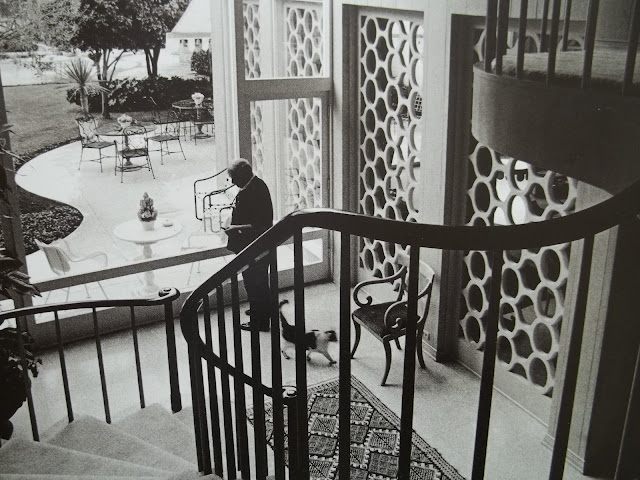Recently I had the opportunity to visit the Wende Museum in Culver City for a tour of its collections and a presentation by Dale Gluckman, former head of LACMA's Costume and Textiles Department, and Lyssa Stapleton, curator of the Cotsen Collection. What I thought would be simply a nice afternoon with friends (this was my first trip to the Wende—I had no idea what to expect) turned out to be a completely eye-opening experience. I could write about the textile lecture itself, but what I really want to do is take you behind the scenes of this burgeoning institution. Angelinos, take note: You can actually witness the birth of a museum. How often does this happen?

The Wende (wende is German for "turning point") is a museum and archive of Cold War material—items from "an extinct culture and time," explained Justinian Jampol, the museum's executive director and founder. Jampol began building the collection in the mid-1990s and formally established the museum in 2002, with the mission to preserve "the cultural artifacts and personal histories of Cold War-era Eastern Europe and the Soviet Union to inform and inspire a broad understanding of the period and its enduring legacy."
What started as a singular idea (a grad school thesis, really) and a grass-roots campaign just ten years ago is now a warehouse of some 75,000 acquisitions, a small exhibition space, and a research facility. The core of the collection is textiles (such as pattern books, banners, and uniforms), but there are also furnishings, paintings, sculpture, and ephemera, plus miles of film, and, as one might expect, great chunks of the Berlin Wall.

While discussing this most "unconventional museum", Jampol explained that the Wende also has a separate 1,000 square feet of space filled with surveillance equipment. That's when I shivered. Up until that point (perhaps with the exception of seeing the military uniforms or the caged busts of Communist leaders) it had really felt like the clinical storage side of any museum. But this is not—by any means—like any other institution I've ever visited.
The Wende is currently working with Paravant Architects on the redesign of the National Guard Armory in Culver City, which was built in the 1960s and most recently served as a homeless shelter. "We hope to be in by the end of 2012," said Jampol, who gave us a peek at the renderings. This is one of the most exciting things happening in Los Angeles right now, and I encourage everyone (not just LA locals!) to participate in its success.
Keep track of the happenings online at Wendemuseum.org and Like them on Facebook.

The Wende (wende is German for "turning point") is a museum and archive of Cold War material—items from "an extinct culture and time," explained Justinian Jampol, the museum's executive director and founder. Jampol began building the collection in the mid-1990s and formally established the museum in 2002, with the mission to preserve "the cultural artifacts and personal histories of Cold War-era Eastern Europe and the Soviet Union to inform and inspire a broad understanding of the period and its enduring legacy."
What started as a singular idea (a grad school thesis, really) and a grass-roots campaign just ten years ago is now a warehouse of some 75,000 acquisitions, a small exhibition space, and a research facility. The core of the collection is textiles (such as pattern books, banners, and uniforms), but there are also furnishings, paintings, sculpture, and ephemera, plus miles of film, and, as one might expect, great chunks of the Berlin Wall.

While discussing this most "unconventional museum", Jampol explained that the Wende also has a separate 1,000 square feet of space filled with surveillance equipment. That's when I shivered. Up until that point (perhaps with the exception of seeing the military uniforms or the caged busts of Communist leaders) it had really felt like the clinical storage side of any museum. But this is not—by any means—like any other institution I've ever visited.
The Wende is currently working with Paravant Architects on the redesign of the National Guard Armory in Culver City, which was built in the 1960s and most recently served as a homeless shelter. "We hope to be in by the end of 2012," said Jampol, who gave us a peek at the renderings. This is one of the most exciting things happening in Los Angeles right now, and I encourage everyone (not just LA locals!) to participate in its success.
Keep track of the happenings online at Wendemuseum.org and Like them on Facebook.





















































